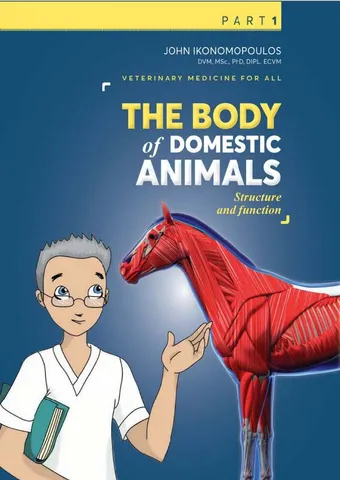The Body of Domestic Animals Part 1: Structure and Function
By John Ikonomopoulos

The Structure and Function of the Body of Domestic Animals; in science this is called Anatomy and Physiology and constitutes the basis of the study of Veterinary Medicine!
Part 1 analyses the structure and functions of the skeletal and muscular systems, nervous system, sensory organs, and cardiovascular system. It contains many references to everyday issues of animal health and behaviour and provides details on the meaning and origin of the relevant scientific terms. Our guide to this journey of knowledge is the veterinarian and professor of Veterinary Medicine, Dr Hippocrates, who explains to us what tendonitis is and how is it linked to the hero of ancient Greek mythology, Achilles.
Read More: Anatomy and Physiology of Domestic Animals 2nd Edition
We learn why cows may faint at the end of pregnancy or why horses do not fancy much jumping over obstacles. We understand the significance of the flexibility of the neck joints in animals using Master Yoda of Star Wars as example, and how a dislocated disk may cause paralysis. Dr Hippocrates tells us about the panic that was caused in the Middle Ages by the parasite called “fearful thread” and recounts how he felt when he first diagnosed a dog with heartworm disease. The aspiration behind this book is to use Animal Health as a training tool for investigative learning!
Direct Link For Paid Membership: –
